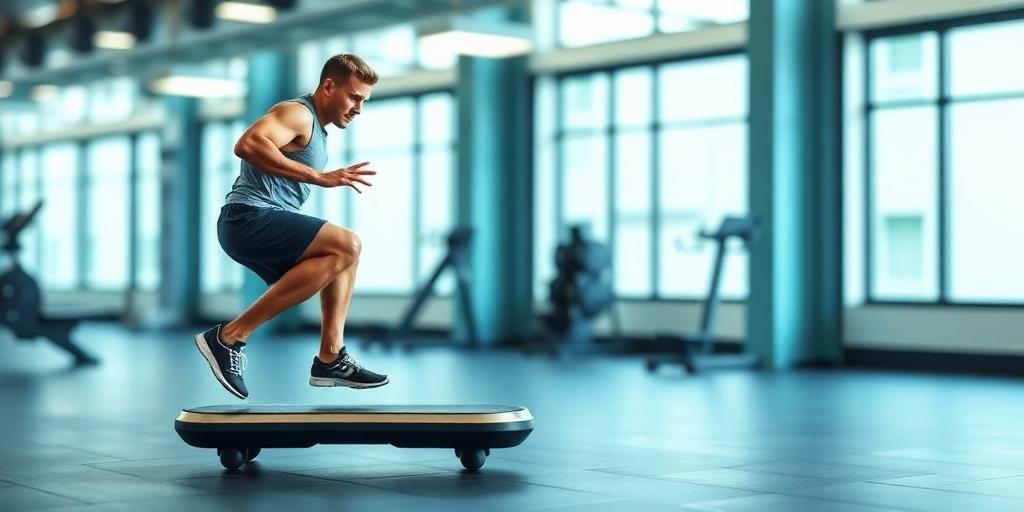The Role of Proprioception in Injury Prevention
Proprioception, often referred to as the "sixth sense," plays a crucial role in injury prevention. It is the body's ability to sense its location, movements, and actions. This sense allows us to navigate our environment without consciously thinking about where our limbs are in space. Understanding proprioception and how to improve it can significantly reduce the risk of injuries, especially in sports and daily activities.
What is Proprioception?
Proprioception involves a complex network of sensory receptors located in our muscles, tendons, and joints. These receptors send signals to the brain, providing information about joint position, muscle length, and the force being applied. The brain processes this information to create a detailed map of the body's position in space, enabling coordinated movements and balance.
How Proprioception Works
- Sensory Receptors:
- Muscle Spindles: Detect changes in muscle length.
- Golgi Tendon Organs: Sense changes in muscle tension.
- Joint Receptors: Detect joint position and movement.
- Neural Pathways:
- Sensory information travels along afferent nerve fibers to the spinal cord and brain.
- Brain Processing:
- The brain integrates proprioceptive information with input from the visual and vestibular systems (inner ear) to create a comprehensive sense of body awareness.
- Motor Response:
- Based on this integrated information, the brain sends signals back to the muscles, initiating the necessary adjustments to maintain balance and coordination.
Importance of Proprioception in Injury Prevention
Effective proprioception is vital for maintaining stability, balance, and coordination, all of which are essential for preventing injuries. Here’s how:
- Balance and Stability:
- Proprioception helps maintain balance by allowing quick adjustments in response to changes in surface or unexpected movements.
- Coordination:
- It enables smooth, coordinated movements by providing continuous feedback about body position and movement.
- Reaction Time:
- Improved proprioception enhances reaction time, allowing for quicker responses to potential hazards and preventing falls or collisions.
- Joint Stability:
- It supports joint stability by activating muscles around the joint to prevent excessive or incorrect movements.
Factors Affecting Proprioception
Several factors can affect proprioception, including:
- Age:
- Proprioception tends to decline with age, increasing the risk of falls and injuries in older adults.
- Injuries:
- Injuries to muscles, tendons, or joints can disrupt proprioceptive feedback, leading to impaired balance and coordination.
- Fatigue:
- Muscle fatigue can reduce the accuracy of proprioceptive signals, increasing the risk of injury during prolonged activity.
- Medical Conditions:
- Conditions such as arthritis, neuropathy, and stroke can impair proprioception.
Exercises to Improve Proprioception
Incorporating specific exercises into your routine can enhance proprioception and reduce the risk of injuries. Here are some effective exercises:
- Balance Exercises:
- Single-Leg Stance: Stand on one leg for 30 seconds, gradually increasing the duration. Progress by performing on an unstable surface like a foam pad.
- Tandem Stance: Stand with one foot directly in front of the other, heel to toe, and maintain balance.
- Balance Board/Wobble Board: Use a balance board to challenge your balance and stability.
- Coordination Exercises:
- Agility Ladder Drills: Perform various footwork patterns on an agility ladder to improve coordination and agility.
- Cone Drills: Set up cones in a pattern and practice weaving through them, focusing on quick changes of direction.
- Strength Training:
- Resistance Exercises: Strengthen the muscles around joints to improve stability and proprioceptive feedback. Focus on exercises that engage multiple muscle groups.
- Plyometrics: Incorporate jumping and bounding exercises to improve power and coordination.
- Yoga and Pilates:
- These practices emphasize body awareness and control, enhancing proprioception through mindful movement and balance poses.
Integrating Proprioceptive Training into Your Routine
To maximize the benefits of proprioceptive training, consider the following:
- Start Slowly:
- Begin with basic exercises and gradually increase the difficulty as your balance and coordination improve.
- Be Consistent:
- Perform proprioceptive exercises regularly, ideally several times a week.
- Focus on Form:
- Pay attention to your body's position and movement during exercises to ensure proper technique and maximize proprioceptive feedback.
- Challenge Yourself:
- Progress to more challenging exercises or unstable surfaces to continue improving your proprioception.
- Listen to Your Body:
- Avoid pushing yourself too hard, especially when starting a new exercise program. Rest and recover as needed.
Conclusion
Proprioception is a critical component of injury prevention, enabling us to move with greater awareness, balance, and coordination. By understanding how proprioception works and incorporating targeted exercises into our routines, we can enhance this vital sense, reduce the risk of injuries, and improve overall physical performance. Whether you are an athlete looking to enhance your performance or simply seeking to prevent falls and injuries in daily life, prioritizing proprioceptive training is a worthwhile investment in your long-term health and well-being.









